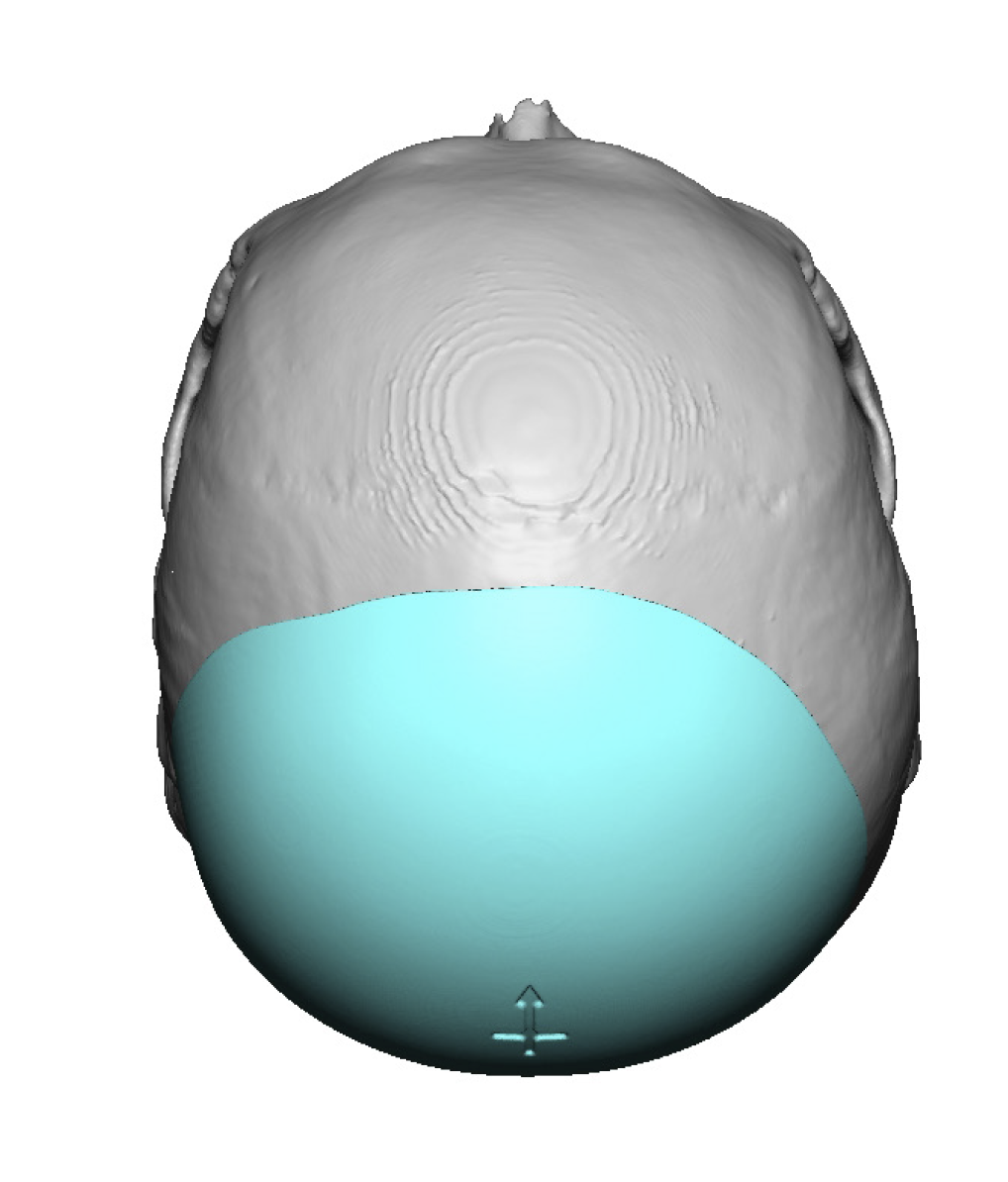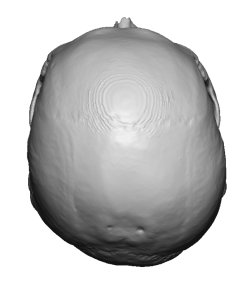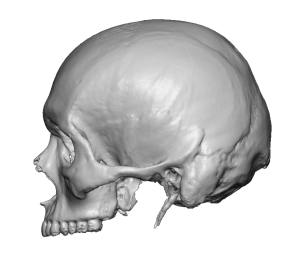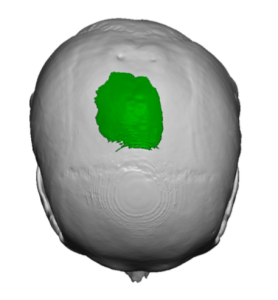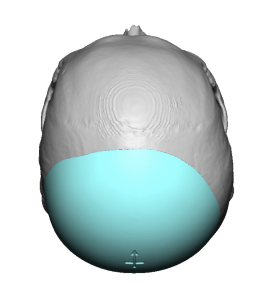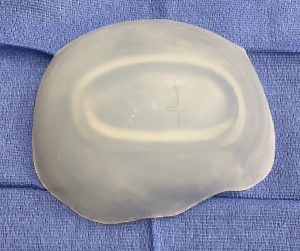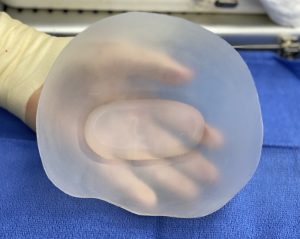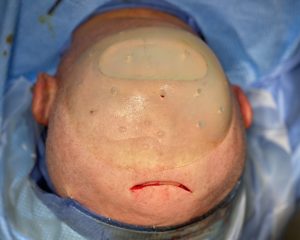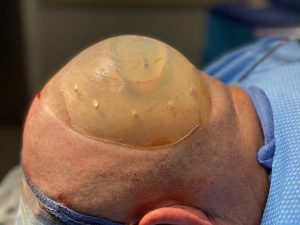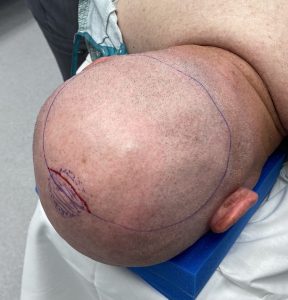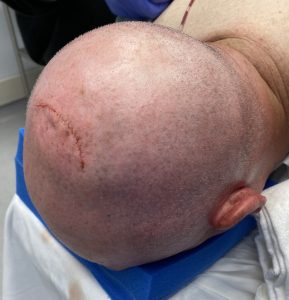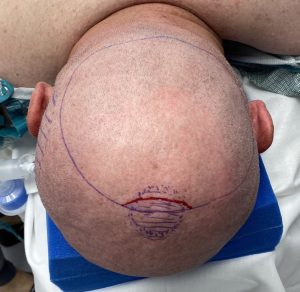Background: Flatness and asymmetries of the back of the head are some of the most common head reshaping concerns. This is particularly relevant in the male who has a shaved head or very closely cropped haircut. Such patients make up the vast majority of back of the head reshaping surgeries. Men early in their life were either not aware of or were unconcerned about their less than symmetric head shape. But when their hair coverage changed and the head shape became more visible it can become a source of aesthetic distress.
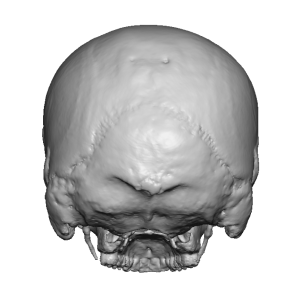

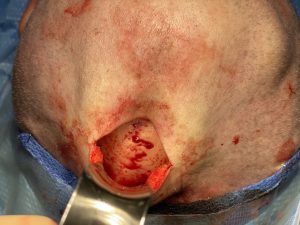
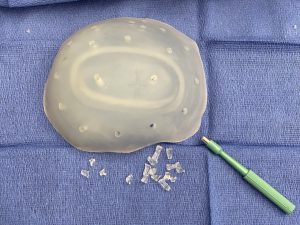
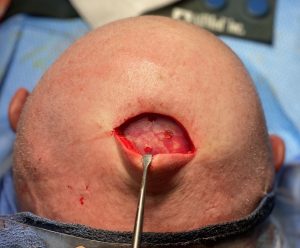
The final part of the procedure was the temporal muscle removal through a left postauricular incision. This was also the location of drain placement with an exit behind the right ear.
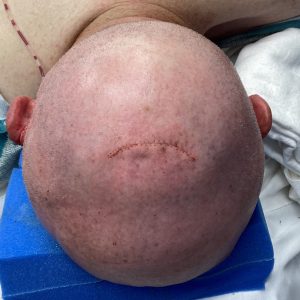
His head dressing and drain were removed the following morning and he went home the following day.
A custom skull implant is always the foundational procedure for reshaping the back of the head. But its effect can be supplemented by additional reductive procedures around the skull implant for further refinements in its shape. A key aesthetic technique is to limit the number and locations of the scalp incisions to do the procedure particularly in the shaved male head.
Case Highlights:
1) The flat asymmetric back of the head is a common aesthetic head shape concern.
2) A custom skull implant provides a reliable and effective method for reshaping the back of the head which can be introduced either through a high or low incision entrance.
3) Another associated skull shape concerns, like a sagittal ridge or a protruding posterior temporal region can be managed as the same time as the placement of a custom skull implant.
Dr. Barry Eppley
Indianapolis, Indiana

